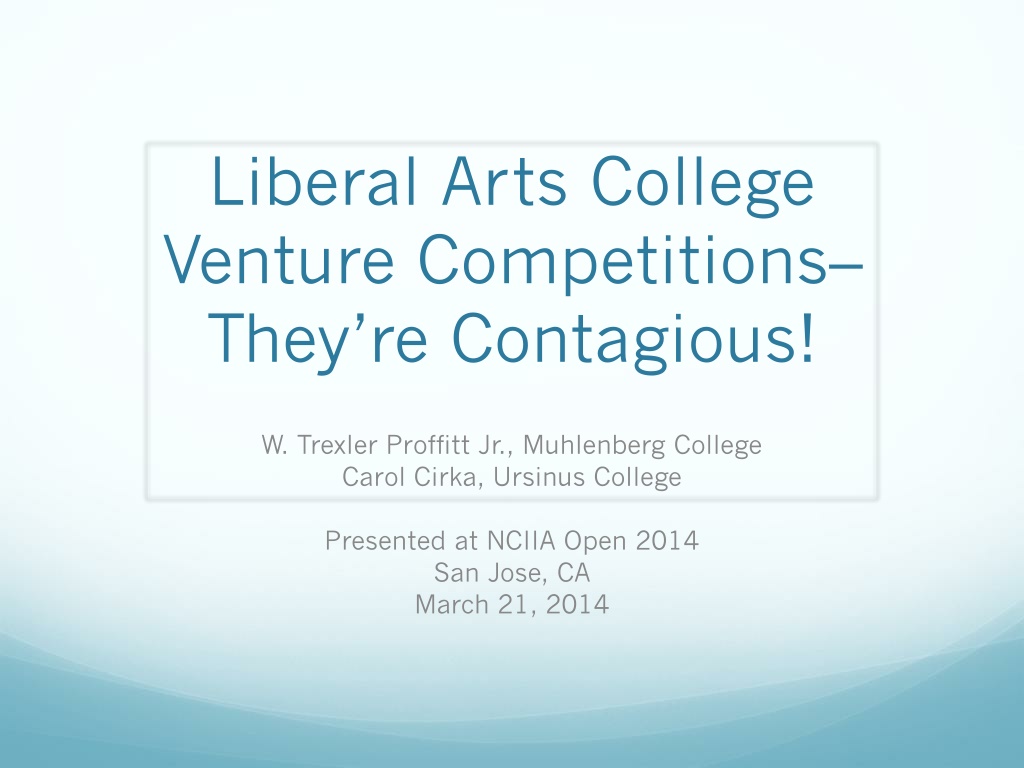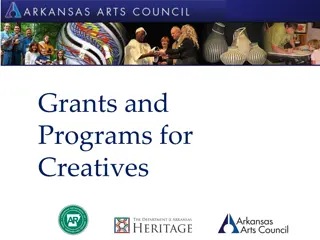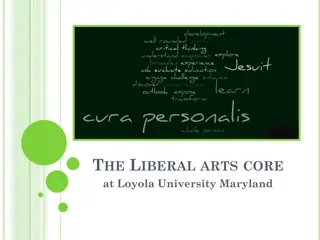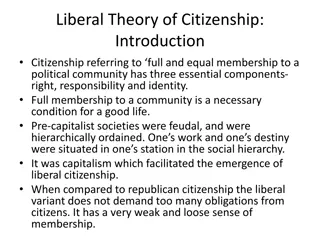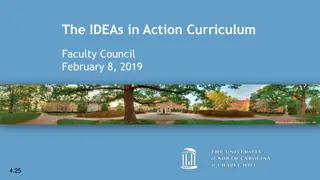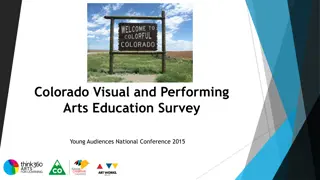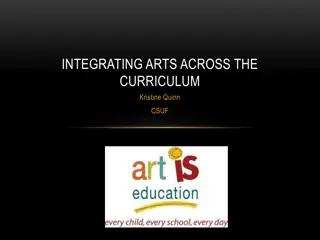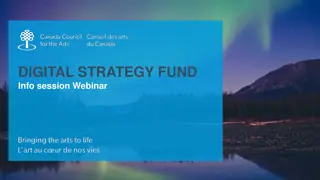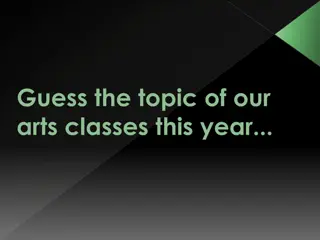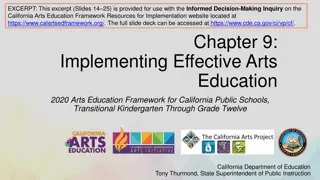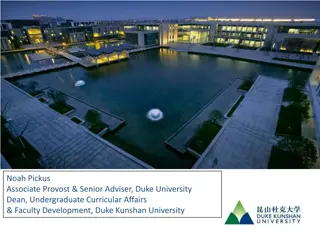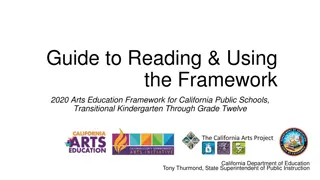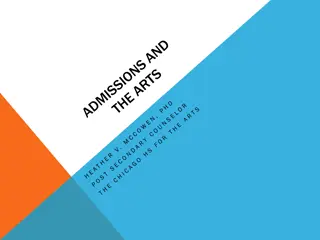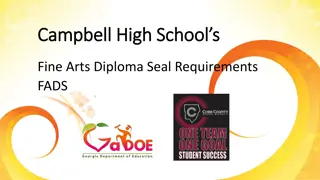Exploring the Intersection of Liberal Arts and Business Education
This content delves into the fusion of liberal arts and business education, emphasizing the importance of blending diverse fields for holistic development. It discusses the rising trend of venture competitions in liberal arts colleges, challenges faced in integrating entrepreneurship into traditional business programs, and the potential benefits of a collaborative approach in talent development.
Download Presentation

Please find below an Image/Link to download the presentation.
The content on the website is provided AS IS for your information and personal use only. It may not be sold, licensed, or shared on other websites without obtaining consent from the author. Download presentation by click this link. If you encounter any issues during the download, it is possible that the publisher has removed the file from their server.
E N D
Presentation Transcript
Liberal Arts College Venture Competitions They re Contagious! W. Trexler Proffitt Jr., Muhlenberg College Carol Cirka, Ursinus College Presented at NCIIA Open 2014 San Jose, CA March 21, 2014
Motivation for Study Blending liberal arts and business Rethinking Undergraduate Business Education: Liberal Learning for the Profession (Colby et al., Carnegie, 2011) Business Majors, but with a Twist (Light, WSJ, 2011) Teaching content in classrooms is not enough Wealth or Waste? Rethinking the Value of a Business Major (Korn, WSJ, 2012) Business students need more liberal arts Liberal arts students need more business (Higdon, 2005; Regele & Neck, 2012 ) Maybe the entrepreneurial mindset is orthogonal to business the way we teach it
Study Process Three liberal arts colleges in Pennsylvania. Same athletic conference Centennial Conference also includes Gettysburg, Haverford, Swarthmore, Dickinson. Three cases similar in size, selectivity, gender distribution.
Venture Competitions Common at universities with business, engineering schools, undergrad and grad programs Uncommon in liberal arts colleges (LACs) Recent energy, particularly those with business programs (mimetic isomorphism) Sample Programs Babson Muller/Charm Prize 1985 (earliest) Muhlenberg Innovation Challenge 2010 F&M Innovation Challenge 2011 Amherst Big Ideas Challenge 2012 Ursinus U-Innovate Competition 2014
Key Findings Existing business programs may be a liability for doing this because of cognitive categorization of entrepreneurship as a specialized area. We can learn from careful tracking of these programs. New Ursinus Model seems more sustainable. Collaboration on campus and high level support make a difference, not just in raw resources but in mobilizing them.
Liberal Arts and Business Business often viewed as isolated from other fields Moving (slowly) beyond technical content and into talent development What are the talents we want to develop? Collaboration Problem-solving Leadership Creativity Resourcefulness Self-sufficiency
Overall LAC Benefits Engagement with alumni Breaking down silos on LAC campuses Gateway to wider community, other competitions Bona fide resume enhancer Student confidence through application Learning by doing Rapid pace of learning Collaborative success New venture creation (perhaps this is actually last?)
Potential Metrics Measure # of Unique Entries # of Majors Represented # of Mentor Contact Hours Faculty/Student Attendance at Presentations Donations Prize Money ($$$!) Faculty Incentives to Students New Ventures Created/Jobs High level involvement Meaning Participation Diversity of student Engagement with alumni Popularity/Awareness Alumni/community engagement Institutional Commitment Academic Integration Economic Development Institutional leadership
Innovation Challenge Challenges Spring Semester, with some programs in Fall Modest prize money of $5,000-8,000 per year Multiple categories attempted Open Sustainability Social Impact Tech Health Care Improve Campus Mentoring and judging by alums, staff, faculty, local entrepreneurs and business development folks
Positives Multiple categories produce reasonable diversity 4 categories led to 89 submissions by 150 students in 20 majors in F&M 11 (first year) now down to 20 Typically see 20 initial entries per category Enthusiasm not always sustainable Students tend to produce interesting ideas and refine them well over time, if they make time Alumni coaches, faculty involvement help Fundraising, career services, PR, alumni affairs staff enthusiastic Alumni/parents enjoy engagement Awards event is an acclaimed positive
Negatives Resource constraints Pipeline issue what happens before or after Few bona fide startups so far Campus awareness low constant publicity and peer outreach required Few faculty involved, no integration w/coursework Alumni/parents have not donated in large #s Academic administrators can appear indifferent Staffing model uncertain
New Ursinus Model Large alumni donation (6 figures), new center Focus on year-round programming Space, budget, faculty support College-wide focus, not business per se Interdisciplinary faculty organizers Support from president, key administrators
Ongoing Challenges Diversify participation and awareness on campus Support multiple categories of entry Convert alumni engagement into long-term support Attract support from administration and faculty Develop pipeline of activity pre/post competition Get some actual ventures going!
Insights from Comparisons Campus Center idea is promising solution Big donor helps a ton to develop focus Top level leadership has a strong mobilizing effect
